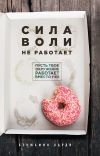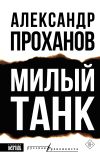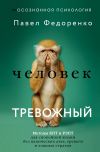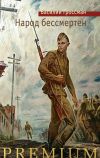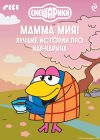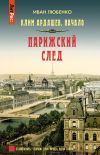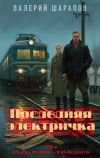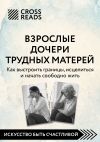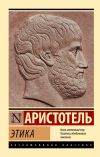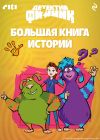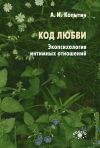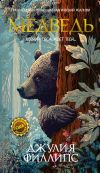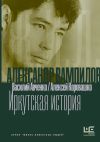Текст книги "Back to the past"
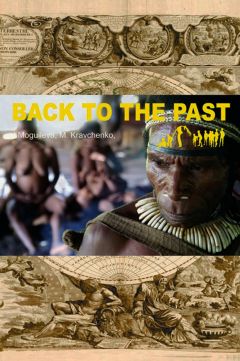
Автор книги: Инна Метельская-Шереметьева
Жанр: Жанр неизвестен
Возрастные ограничения: +12
сообщить о неприемлемом содержимом
Текущая страница: 2 (всего у книги 9 страниц) [доступный отрывок для чтения: 2 страниц]
Chapter Two. Wamena.
WONDERFUL CAVEMEN LIVE THERE
Andrey’s Story
As I have mentioned above, there shouldn’t be any problems getting a pass on your own to visit the closed (belonging to the national park) territories in the further part of Irian Jaya. The pass itself costs a few dollars and is given to travelers upon presenting their passport with an Indonesian visa, two photos and a filled-in application form (which is very simple). We decided to use the help of a local assistant. By the way, we kept using the locals’ help and not due to our own slow speed. In an unexplored area still uninhabited with travel agents (somewhere like Baliem Valley in Irian Jaya, the Banga suburbs in the Central African Republic or Napo river basin in Ecuador), the locals’ active help in solving different matters facing travelers allows them to speed up the process quite significantly and acquire some useful contacts.
Comparing the life of the locals with your own, realizing how much more difficult it is and how much it lacks, a normal and racially unprejudiced person from our European civilization must at least want to help the locals in some way. Of course, I mean material aid here. It is like feeding a hungry child or helping a disabled old man. These are the realities of our worlds, of our and their living conditions. Without blaming the authorities, God or just universal injustice, think simply: if I can share something, I will. But in order not to train the locals to beg and cajole money for allowing you to take a picture, in order to avoid in Irian Jaya what happened in Australia where ‘kind’ Europeans turned aborigines into beggars and drunkards and made begging a full-time job of the locals, we always asked them to do some work for us. Everything is simple – you do work, you get money. And many times we noticed that Indonesians appreciate such earned money much more than donations. I am deviating from the topic though but in this book it is Michael and Alexey’s responsibility.
It’s not difficult to get a ticket to Wamena either. Theoretically, planes fly to this small town regularly, but in fact the flight schedule depends on how full the planes are. If the quota of 25 seats has been filled, the flight will take place. If it hasn’t, you will have to wait. And while we are waiting for a plane, I will tell you a short story about Wamena and the Baliem Valley – the last outpost of civilization in Irian Jaya – as it is often called in various tourist guidebooks. Unfortunately, it is impossible to determine exactly when the local tribes started full-scale exploration of Valley Baliem. Here, I don’t mean settlement in the valley, but specifically exploration, cultivation and turning it into a certain center of the inter-tribal community. Anyway, when American explorers discovered Wamena in 1938, it was already a rather big settlement with developed farming, which was mostly inhabited by the Dani tribes. Members of the Yali and Lani tribes lived and worked nearby, but higher in the mountains, sometimes coming down to Wamena to exchange handicraft products for food. That is how National Geographic magazine described Wamena in 1941. The word “Wamena” itself is translated from the local language as “a pig for you”. Hunters probably used to catch wild pigs and bring them to the settlement in exchange for cultivated vegetables.
The Baliem river valley is located 1600 meters above sea level. It is 72 km long, and from 15 to 75 km wide. Visually, it is a huge ravine impossible to cover with your eye, hidden from the rest of the world by almost totally vertical rocks. Stunning views, a rather moderate climate and some rudiments of civilization attracted the first missionaries to Wamena about 10 years after its first publication in the magazine. It was a Danish mission. Obviously, having brought here metal tools, primitive utensils, clothes and books, the missionaries first of all started building churches and schools. They were successful. There are about twenty parishes and four schools in Wamena today. Not all the churches look well attended. Some of their yards are overgrown with weeds and almost all of them are empty. To be more accurate, locals go to church, but they do it probably because their ancestors did it as well. We weren’t able to find out if they perform the same ceremonies – christenings, weddings, or prayers. Although most missionaries left Wamena in 1962, some volunteer pastors still live there, though they are not in a rush to talk about their successes. It isn’t the most important thing though. Pastors are doing a great thing. They educate local children (as well as they can), treat people and animals, and try to teach some moral principles of peaceful co-existence of different tribes. By the way, Wamena’s inhabitants’ attitude towards school is rather neutral and even cool. Children don’t have to go to class regularly. One of the neighbours’ children’s example is usually the one to follow if they have become important people and make more money than their fellow tribesmen. Neither clothes nor school lunches have the same magical influence. Children are mostly busy pasturing animals, playing football or begging for money in the town streets, seeing off tourist cars screaming “gulya-gulya-gulya– ka-a”, which means “give me a candy!” However, many times we have also seen children dressed in uniform skirts and trousers, wearing white shirts and carrying books, walking somewhere along the roads, most probably, to school.
In spite of the fact that the government has built enough simple but rather civilized housing in Wamena (it is one-storey houses made of plasterboard with slate roofing), the Vamenians still prefer to live in kampungs – traditional round wattle and daub houses. Wamena, like any other regional town, has a strictly defined center where you can find some shops, a market, a hairdresser’s, a hospital, town administration buildings, the police and even an office of an Indonesian bank. Wamena also has suburbs, where residents rarely wear clothes, live off subsistence farming and almost never come to “the center” with the exception of the hospital or school. The Indonesian government has made colossal efforts to turn Irian in general and Wamena in particular into a civilized area. Once in a while, planes deliver clothes, footwear and medication, and bring rice, sugar, tea, coffee and other simple food supplies. The government also makes sure that there are no alcohol deliveries to Wamena. This is why it is even a problem for tourists and those Europeans who work in the Baliem Valley under governmental contracts to buy beer.
From the year that has passed since we visited Wamena for the first time, the town has changed a lot. In the airport we weren’t met by a big Papuan crowd staring with curiosity at any white people who ended up in their lands at some point in their travels. As for those whose habits remained strong and who came to the airport anyway, they were wearing more clothes. Old and rag-like, but clothes nonetheless. Only one grandpa who we remembered from the previous trip was still happily waving at the tourists while standing in the center of the square in his bushy broom made of bird feathers and a customary koteka. He was holding a small plastic bag with some paper bills, which the old warrior earned by posing for pictures with travelers. We were happy to see him as if he were a member of our own family and the Dani tribesman earned some more bills from us – not for posing in our pictures but for his persistence and army-like faithfulness to his duty – to greet guests at the entrance to his town. God bless him with many more years of life.
Like the first time, it took us two hours to get to the Baliem Valley Hotel where we decided to stay. But this time we hardly noticed the time pass by. First of all, it was very interesting to remark on all the changes which had taken place in Wamena in just 12 months’ time, to compare our last year’s impressions with what we felt today. Secondly, we couldn’t wait to meet our good friends – Isaya (our co-traveler in the first trip into the local jungle) and Ika – the manager of the hotel and the whole Papuan hotel team, where everybody is unnoticeable but at the same time irreplaceable and a personality.
Isaya, peacefully carving some wood stick on the steps of the hotel, reacted to the arrival of a minibus as a professional: he assumed a dignified air, raised one eyebrow and then after thinking for a short while made a scary facial expression (a true caveman). But when Alexey came out of the car screaming, “Hey, brother, you weren’t expecting us, were you?”, our Papuan friend immediately changed, shed a tear or two and then started jumping and laughing like a child. He gave us all hugs in turn, even shook us a bit, looked into our eyes and then taking our backpacks, pulled them inside the veranda. He dropped something on the way, yelled at some worker for his own clumsiness, arranged some coffee for us, made sure we were ok, personally brought our keys, and resolutely gave our backpacks to the Papuans after having unmistakably determining whose was whose and where they had to be taken.
We sat down to have the coffee on the open veranda, watching the gigantic sun disk going down behind the picturesque hills. We were smoking scented Indonesian cigarettes and smiling, listening to the unceasing twitter of the Baliem birds and Isaya, who decided to inform us about all the events of the past year in just thirty minutes. He only fell silent when he saw the pictures we had brought from Moscow of our previous trip. It became obvious that only rules of decency kept Isaya next to us as he was so impatient about running to the village and showing to his tribesmen the large (in A-3 format) color pictures where the main character, of course, was our faithful guide.
Excursus Three. Isaya – A Child of the Jungle. Alexey’s Story Continues.
I must say that most guides who work along the Jayapura – Wamena segment of the way, as well as people who work in the hospitality business in these towns, arouse true sympathy. They are nice, and in their own way, caring people. Most of them are Indonesian, but there are some Papuan too. Being touchingly naïve, they believe that tourists are their good friends and get very upset when they face cold attitudes, snobbism and even more so, rudeness. Our Jayapura guide Siprianus is a good and business-like guy. He came to Jayapura from some place on Java, got a family and a job. To us he seemed happy with his life. Among his business colleagues, he enjoys authority. People consider his opinions and quickly fulfill his requests. Siprianus has dealt with Russian tourists several times, so he believes he knows everything about Russia: Moscow, Putin, snow, etc. but unfortunately he is not very excited about our compatriots. Being as tactful as he could be, Siprianus once mentioned to us that Russians will have big problems in Irian Jaya because we (Russians) are very irritable, and aren’t inclined to generosity or curiosity. We seem to want to see something that other people can’t see but we don’t want to pay for it. However, when we said goodbye to Siprianus at the end of our expedition, our guide seemed to have changed his opinion about Russia and Russians for the better. I hope that those who come into this wonderful land after us will not make this Indonesian change his mind back, thinking more about “the mysterious Russian soul”. But I can also understand (although not excuse) our compatriots who had caused the guide’s complaints. It’s true that to a tourist spoiled by the service at European and even Egyptian or Turkish resorts, everything in Irian Jaya may seem like it couldn’t be worse. Waiters will never bring you exactly what you have ordered. Your luggage may end up in another room and not where you are staying. You won’t be taken to the airport to the start of check-in but three hours before. I strongly believe that these slip-ups are not due to a desire to cut corners but to a special mentality of the locals. Life in that climate without a clearly distinguishable change of season, where minutes and hours are perceived in the same way as “time”, where there is an idea of “food” but no idea of “menu” – all these together can’t but cause a certain degree of infantilism and lethargy. What if taking care of you, your child offered you coffee instead of tea while tenderly looking you in the eye trying to see if you liked it – would you really get upset? It is the same here. Irian Jayans often behave like big children and the most important and beloved child we have found in these lands is our Vamenian helper Isaya.
Isaya is forty years old. He has a house in Wamena, a serious job and a grown-up daughter who is about to get married. But with all this, Isaya himself is a real Tom Sawyer the way Mark Twain described him. It is impossible to tell when Isaya is telling the truth, when he is starting to fantasize without restraint or even openly lying. In one minute he can make ten opposite decisions. He can whistle joyfully and smile happily but after a moment start frowning gravely, sighs and goes into a desperate and hopeless depression. When we went there for the first time Isaya told us that he was a son of a famous Korowai chief who had been taken away from the jungle by some white missionaries because he had seemed to them the most talented and gifted child. This time our buddy didn’t claim his Korowai roots but kept stressing that his tribesmen lived quite a long way from Wamena. However, for a European and a Papuan, the ideas of “a long way” are so different that they cannot be compared or measured…
In fact, to me it seemed like Isaya truly believed everything he was saying at the moment. This is how his world is organized. If he is melancholic, his stories will have a melodrama touch to them and the residents of the villages he is telling us about now will have to go through some sort of disaster in the process of the story. If he sees a pretty Papuan girl, he suddenly remembers a couple sensitive love stories and starts talking about the matrimonial customs of the local tribes. But if he takes a disliking to the inhabitants of a village, he will be able to arrange a quick quarrel in order to sort things out or even a real fight. In fact, Isaya is a tireless traveler, rather well educated, quite competent and enterprising. I can certainly state that we can only wish those who come after us acquire a friend like Isaya has become for us. But we will come back to Isaya later as our Kombai adventures in the jungle are inseparable from this man.
Excursus Four. A Bullet-Proof Vest: A Gift to the World. Michael’s Story.
We had the rare luck to watch and study people who live in complete isolation from other peoples and civilizations at such a level of social development when most of the tools and even home utensils are produced from bone, stone or wood. Basically, we managed to see the Stone Age. Live illustrations from a textbook on world history or ethnography, virginal tribal relations and an inexpressible flavor of this land – isn’t this the dream of every explorer or traveler? That said, I wouldn’t take a risk calling the Papuan civilization “primeval”. It is one of the earliest known to modern science, including N. Miklouho-Maclay’s materials. I can talk about the Papuan culture for hours but now I would like to discuss one of its brightest elements – the clothes.
Considering the climate of the tropics, clothes are not a necessary attribute and can be minimal to the extreme. Totally naked children and adults, as well as those only partially covered with simple outfits are a typical scene for Irian Jaya. Nudity among the Papuans doesn’t cause any shame and is not an ethical idea. The almost total lack of clothes has been brought about by the climate and their way of life. It is easier and more comfortable for them this way. Even more so, our guide Isaya once told us that the missionaries’ attempt to teach the Papuans to wear clothes ended in diseases due to uncleanliness. The Papuans in their nudity are as natural and harmonious as the Eskimos in their heavy walrus coats.
The latest reference book on ethnography defines clothes as “an artificial cover of a human body”. This is a very bone-dry and academic way of putting it. Getting to know the Papuans made me think about the functions of certain “artificial” covers. First, it happened in the Jayapura museum where we noticed very specific things in one of the niches. Almost without hesitation, Alexey defined them as “bullet-proof vests”. In fact, they were ancient protective items woven from very thin and strong willow reeds. We had never seen anything like that before. Tribal hunters usually do with common wooden shields which protect them from the enemy’s arrows and spears. What we saw here was real chainmail woven from whatever was at hand. By the way, we found the “great-grandmother” of the modern string bag in the same museum. Contrary to our women, the Papuans see it as a piece of clothes, wear it on their heads and use it not only to carry different things but also to carry babies. Every young man or woman makes their clothes themselves. The idea of craftsmanship is not developed here, so presenting or exchanging something that a person wears is not customary.
By the way, decorative clothing functions in Papuan culture is especially strong. In some pictures in the museum and even in some tribes in real life, we saw some richly and even smartly “dressed” Papuans with splendid crowns made of feathers, and wearing bright decorative elbow and knee pads with several layers of beading and rivieres. The fact that the person was actually naked wasn’t obvious to the eye. Different tribes have different traditions in this aspect though. The custom of men’s clothes usually differs, whereas women’s outfits are the same almost everywhere – they are aprons or skirts made of grass (tapa), which vary only in length from tribe to tribe.
The main element of men’s clothes is a phallocrypt – a device covering a man’s reproductive organ. In the tribes of Irina Jaya it’s called a koteka. In the Dani tribe, the koteka is made from the hard peel of a local cucumber (gourd) whose texture reminds one of a light-yellow covered pumpkin. A koteka’s size depends on a warrior’s status and on whether it is meant for everyday use or for ceremonies. The length as a rule varies from 21 to 47 centimeters. The wider end has a special cut in it and a small string to tie the “decoration” to the body. In addition, kotekas can be attached by a cord going around the waist or by a rather wide tapa belt.
In the Lani and Yali tribes, kotekas are wider and are made from the same vegetable, but harvested in a later period. Except for dissimilar sizes, they are in principle no different from the Dani’s phallocrypts, but by function they also serve warriors as convenient pouches to carry small things, including the ever popular tobacco.
In the Kombai and Korowai tribes, kotekas as such don’t exist. Men cover themselves with a small leaf case, rolled from a palm-tree leaf. I must say here that walking around the jungle completely without a protective cover is too dangerous. Numerous thorny plants, the necessity to walk through thick bushes or climb rough trees will eventually cause an injury. However, we noticed that both the Korowais and Kombais in some villages also wear belts. It is difficult to explain their function. Most probably, it is a type of men’s decoration which is a symbol of belonging to a certain clan.
Compared to the men’s belt (the mahl), the women’s belt is additionally decorated with a fringe which sometimes goes down to the knee and in this way it looks more like a skirt. Among the tribes of the Baliem Valley, we saw women’s mahls colored in red and yellow with natural dyes. The Kombais and Korowais’ women’s belts are not additionally colored or decorated and have the natural color of dry grass. By the way, the fact that the women’s belt exists allowed Mikloukho-Maklay to make a hypothetical conclusion that these tribes have a feeling of shame. From a functional point of view, such a skirt doesn’t protect one from anything, but it is an obligatory part of women’s outfits. The conclusion that the mahl is just a way to identify sex seems more logical to me. My example won’t be the most convincing but nonetheless here it is: tying a blue or pink ribbon around a baby nest to identify a boy or a girl in our culture is similar to the Papuan tradition of wearing a woman’s mahl. In all fairness, I have to say that the hospitable Korowai and Kombai tribes we spent quite a lot of time with had some elements of a feeling of shame. In particular, not only women but men as well never completely exposed themselves in our presence. Isaya explained to us that they don’t do it even in each other’s presence either. Only family couples are an exception, and only at night. By the way, the Kombais wearing miniature kotekas think of themselves as nicely dressed. However, when the Papuan men caught us swimming in the river totally naked, they laughed at us and probably condemned us as well.
Speaking about clothes, I can’t but mention such an important element of the Papuan culture as their custom of rubbing their bodies with clay, creating tattoos, and having piercings and cuttings done to them. Unfortunately, we obviously lacked some of the knowledge necessary to grasp the idea of all these actions but I am sure that only true specialists can analyze the precise meaning of the different ornaments, and their possible connection to irrational, magical and ritualistic purposes.
Chapter Three.
Preparing to Start.
“We still have 14 minutes to go…” (Song lyrics)
Andrey’s Story Continues.
For us, arriving in Wamena wasn’t only marked by the usual pre-start fuss (i.e., working out the route, buying food supplies, determining the cost and dates of our flight by the missionary plane), but also by some unpleasant events. Two out of four of us got sick, with Michael feeling really bad. The reason must have been not so much with the change in climate, with its frequent temperature drops between the open-air heat and freezing cold of our air-conditioned rooms, but our old tiredness brought from Moscow. We had worked really hard the previous year, but none of us managed to rest well and return to good physical shape before the trip. Alexander had just come back from a shooting expedition somewhere in the Ussuriysk taiga; Michael and I had been working overtime at the end of the year to catch up on some work and had been busy doing so almost 24 hours a day. As for Alexey, he set off without any preparation at all, joining us literally from behind his desk. I believe that those who decide to follow our steps on the route should be more careful during the preparation stage in Russia and take some vitamins, maybe, or go to the gym for a while… I don’t know exactly. We did it the way we did it.
As a result of all the abovementioned issues, on December 25th, Michael went down with the suspicion of acute bronchitis. The fever was well over 39º C, he was terribly weak and there were only a couple of days left to the start. We did our best to speed up Michael’s recovery as much as possible – went through the instructions and precautions for all the medications in the first-aid kit, consulted the local doctor, and gave him a series of antibiotic injections. Very likely, that thanks to our efforts, all the hotel workers’ sincere care, undying attention on Isaya’s part as well as Michael’s rare courage and optimism, the disease retreated rather quickly. On December 27th, still shaky on his feet with weakness, Michael came out on the veranda of the bungalow to write in his diary. We realized that everything was going to work out. Nothing was going to fall apart! We had less than 28 hours left to prepare, so we took a separate mini-bus and rushed to Wamena. Every three hours, Alexander contacted Michael on the radio to make sure our “patient” was feeling ok and to inform him about our route, which he was following non-stop on his GPS-navigator. It must be said that Michael was very patient about our excessive care and didn’t ask us to leave him alone even a single time.
We managed to hire a plane pretty easily at a small airfield not far from the main Wamena airport. As opposed to last year, our plane was for seven people. It was much bigger in size and capacity than the one we had the previous time, which meant the problem of extra-weight wasn’t as serious. Since various photographic and TV equipment made up the majority of our luggage, the extra-weight problem was not an idle inquiry. I am sure you will agree it would be pretty nasty to find yourself in the jungle with minimal food or medical supplies, without any spare clothes or a spare set of batteries, or without practically any presents for the locals. Thank God, we didn’t have to face that. So, full of bright hope we set off on a Wamena pre-start shopping spree. Naturally, Alexander reported our luck right away and Michael, suffering from our minute-by-minute reports, was probably sorry that the charge in those radio batteries was most likely good for another ten hours.
The majority of our purchases was made up of salt, matches, local tobacco (the Papuans didn’t believe in our cigarettes) and rice. From Moscow, we brought all kinds of instant soups and cereals, so we patiently looked at Isaya as he bought cases of Rollton instant noodles, because we understood that our buckwheat and pea soup would be much tastier. By the way, we also brought several packs of freeze-dried beets, cabbage, carrots and meat. They turned out to be great when we were hiking. These kinds of food take up minimum space and weigh very little, but bring considerable variety into your diet at the same time. We hadn’t forgotten about lemons either. They are a good remedy when you have a water deficit and a salt imbalance. Having given it a little thought, we decided to take some sugar with us as well. It would be hard to carry but we were going away for a long time and the chances were that we would want some sweet tea sooner or later. This decision proved to be right too. We also bought some caramel candies for the Papuan kids. Most of the candies that we had brought from Moscow melted in the heat and we hurriedly gave them out to the Wamena children before they completely lost their marketable condition. By the way, we noticed that the town boys and girls show much more interest in candies than the jungle kids. The tribal children accepted our presents in a very calm way without showing any enthusiasm and easily gave them away to their parents.
We had less than ten hours before the flight. Clouds rolled in and covered the sky. It started raining and got much colder. We called a meeting of the Big Council on the veranda of the Baliem Valley Hotel. The conversation wasn’t going well. We got through to our families using the satellite phone. Their voices in Moscow sounded rather cheerful, probably too cheerful to be sincere. Moscow was preparing to celebrate the New Year. As for our wives, mothers, children and sisters – they were preparing for a three-week-long wait for our return and trying to convince us that they weren’t worried at all and believed everything was going to be alright.
As strange as it may seem after these short conversations with our friends and families, we sort of totally relaxed. We must have felt that we were worried much less than those who we had left behind, which meant that we just had to concentrate and set our minds on normal work – to specify the route’s details, get the equipment ready, check again and if necessary re-pack the luggage. We spent most of the night doing all these simple things. By this time, the rain had almost stopped and the sky over the valley was turning pink. Sunrises and sunsets here are magnificently beautiful. The sky looks like a layered cake where the cloud layers are all in different and strange shades – from deep inky blue-green to cranberry, orange, sandy pink and pearl colors. A photographer’s dream! But for the thick fog, the pictures would have come out fantastic! For some reason we didn’t want to go into our rooms. Isaya was snoozing in an armchair, Michael was lying on a tourist mat. Alexander was sitting awake next to him. Alexey and I were drinking coffee for a long time and smoking, but probably fell asleep for a short while too because when our mini-bus driver came up and invited us aboard, we felt fresh and rested. However, the American pilot who met us at the airfield didn’t seem to have had enough sleep at all. He was the same contract pilot who flew us to Yaniruma the previous year. He threw a gloomy look at our luggage and then at us – recognition flashed in his eyes. Automatically continuing his mumbling, he started loading our things but the tone and the intonation of his voice had definitely changed. Translated his mumbling into Russian would sound like this: “Why the hell are they going into the jungle?” (at the beginning) and “They’ll leave and I’ll have to worry about them!” (at the end). Alexey sincerely praised the pilot’s new plane which totally melted the ice in the grave American aviator’s heart. The last minutes before take-off. Like the song about Gagarin goes: “We still have 14 minutes to go”. We board and fasten our seatbelts. A short runway. The cameras are ready to shoot. Everybody is concentrated and attentive. Isaya is whistling some alarming melody. Michael is the only one who is serenely sleeping in his seat, having cozily covered himself with someone’s windbreaker. We take off! Wamena remains far below.
Excursus Five. Last-year’s Dream. Alexey’s Story.
It is already hard to remember which one of us had the bright idea to exchange our Wamena holiday for an accelerated march into the jungle; especially after having travelled around Indonesia for three weeks, during which we took off and landed about 46 times, crossed the whole archipelago from west to east, visited 12 islands and seemed to have loaded up on sensations and impressions for the next five years in advance. Somewhere there, in the far corners of our memory, blue Java rhinos were pasturing while being scared once in a while by some crocodiles crawling out of the river. Bloodthirsty Komodo dragons frightened absent-minded tourists and swarms of flying foxes, hiding inside the mangrove forest, would whir as they instantaneously covered the whole sky. That’s it, finished. There was no room for more emotions. Or this was how it seemed. However, right after stepping onto Wamena soil and seeing the first villainous-looking Papuan wearing a broom made from bird-of-paradise feathers and a koteka and witnessing the theatrical greeting show of painted-up naked people, we realized that our thirst for new impressions was growing by the minute. We felt like seeing something less theatrical but more truthful and calm, and as harmonious as the magnificent and grand natural surroundings of the Baliem Valley. I must remark here that at that time we hadn’t met Isaya yet and were totally unfamiliar with the local customs and dangers hidden in the Papuan jungle. Nonetheless, we managed to arrange everything in just a couple of hours.
Внимание! Это не конец книги.
Если начало книги вам понравилось, то полную версию можно приобрести у нашего партнёра - распространителя легального контента. Поддержите автора!











